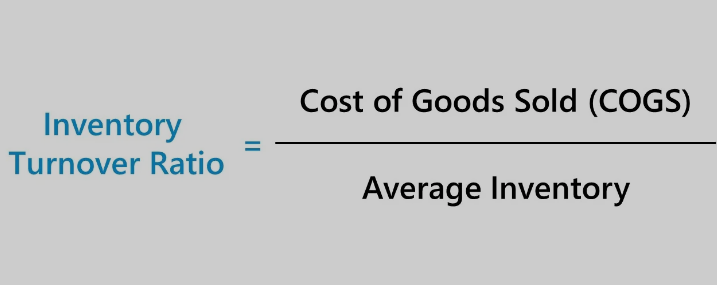Understanding Inventory Turnover Ratio: Calculation, Implications, and Standards

Inventory management is crucial for businesses, especially those with physical products. Efficiently turning over stock not only reflects good sales but can also point to effective inventory management. The inventory turnover ratio is a key indicator of this efficiency. This article dives into its intricacies and answers some common questions like: How do you calculate the inventory turnover ratio? What implications does it carry for a business? Is 12 a solid figure? And what does an inventory turnover ratio of 1.5 signify?
Also Read:- Understanding the Rebuilt Title and Its Implications: A Comprehensive Guide
What is the Inventory Turnover Ratio?
The inventory turnover ratio is a metric that measures the number of times a company sold its average inventory during a particular period. It is a pointer towards the company’s effectiveness in managing its stock, converting it into sales, and replenishing it.
How Do You Calculate Inventory Turnover Ratio?
To calculate the inventory turnover ratio, use the following formula:
Inventory Turnover Ratio=Cost of Goods Sold (COGS)Average Inventory
Where:
- Cost of Goods Sold (COGS) represents the direct costs of producing the goods that were sold during the period.
- Average Inventory is calculated as: Beginning Inventory + Ending Inventory2
Let’s break down this formula a bit. The COGS reflects the value of the goods a company has sold, whereas the average inventory provides a snapshot of the typical amount of inventory the business held over a given period.
What Does the Inventory Turnover Ratio Tell Us?
The inventory turnover ratio gives insights into:
- Inventory Management: A high ratio may indicate robust sales or effective inventory management, where stocks are replenished just in time, reducing holding costs. Conversely, a low ratio might suggest overstocking or poor sales.
- Liquidity: A higher turnover indicates quicker conversion of stocks into cash, implying better liquidity. In contrast, a low turnover might mean that funds are tied up in unsold stock.
- Sales Trend: Rising turnover ratios can suggest increasing sales, while decreasing ratios might hint at declining sales or shifts in consumer demand.
Is 12 a Good Inventory Turnover Ratio?
Whether 12 is a good inventory turnover ratio depends on the industry and market context. For some industries like fast fashion, a high turnover (perhaps greater than 12) might be the norm, indicating rapid sales and quick inventory refresh cycles. For others, such as luxury car manufacturing, the turnover ratio could naturally be lower.
It’s essential to compare a company’s ratio with industry benchmarks or competitors. If most businesses in an industry have a turnover of 8 and one company boasts 12, it can indicate superior performance. However, too high a ratio, even in high-turnover industries, might suggest under-stocking, which can lead to missed sales opportunities.
What Does an Inventory Turnover Ratio of 1.5 Mean?
An inventory turnover ratio of 1.5 means the company sold and replaced its inventory 1.5 times during the period in question. This could be seen as low for many industries, suggesting slow sales, overstocking, or holding onto obsolete inventory. However, for industries with long production cycles or high-value items, this might be standard.
Factors Influencing Inventory Turnover Ratio
Several factors can influence this ratio:
- Sales Performance: Effective sales strategies, marketing, and consumer demand play a role in moving inventory quickly.
- Inventory Purchasing: Efficient purchasing departments keep stock levels aligned with sales forecasts.
- Market Trends: Seasonal demands, shifts in consumer preferences, or broader economic factors can influence the ratio.
- Product Life Cycle: New products might have higher turnover ratios as they gain market traction, while older or obsolete products might move slower.
Final Thoughts
The inventory turnover ratio is a powerful tool for businesses, providing insights into sales efficiency and inventory management. As with all metrics, it’s vital to interpret it within the industry’s context and alongside other relevant indicators. Comparing with peers, tracking trends over time, and understanding the factors influencing the ratio are critical for drawing actionable insights.
Whether you’re striving to reach an inventory turnover of 12 or deciphering what 1.5 means for your industry, the key lies in understanding the story behind the numbers and strategizing accordingly.
FAQs on Inventory Turnover Ratio
1. What is the Inventory Turnover Ratio?
It’s a metric that measures how many times a company sold its average inventory during a specific period.
2. How is it calculated?
3. What does a high ratio indicate?
A high ratio may indicate strong sales, effective inventory management, and better liquidity.
4. Is an Inventory Turnover Ratio of 12 considered good?
It depends on the industry. In some industries, 12 might indicate superior performance, while in others, it might be average or even below par.
5. What does a ratio of 1.5 suggest?
It means the company sold and replaced its inventory 1.5 times during the period. Depending on the industry, it might be considered low.
6. Why is this ratio important?
It provides insights into a company’s sales efficiency, inventory management, and overall business health.







